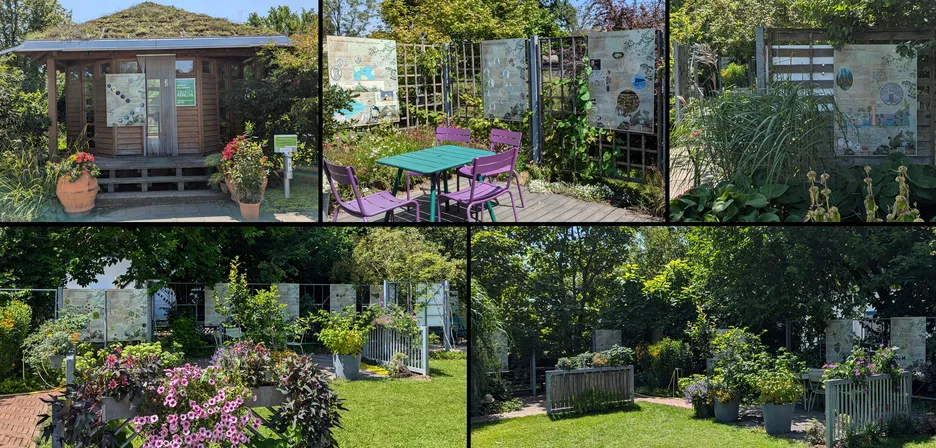Three funded PhD student positions are available at the Chair of Plant Systems Biology at the School of Life Sciences of the Technische Universität München in Freising-Weihenstephan.
- Polarity regulation by protein kinases during stomata development
- Phospho-regulation of the plant cytoskeleton
- Developmental adaptations for plant growth in soil
We seek highly motivated PhD students to strengthen our interactive and collaborative team. The projects are founded on the well-established and highly visible track record of the laboratory in the analysis of plant growth processes regulated by AGC1 kinases.
The Chair of Plant Systems Biology has strong expertise in all relevant molecular, cell biological, biochemical, physiological and genetic techniques. The group also has strong ties with the LMU Munich, the University of Regensburg and the Helmholtz Zentrum München.
Please send a letter of motivation and CV in a single PDF to: claus.schwechheimer(at)tum.de
The positions are available in early 2025 and will remain open until filled.
Further information: https://www.mls.ls.tum.de/en/plasysbio/home/

The Schwechheimer laboratory hosts Prof. Takeshi Nishimura from the National Institute of Basic Biology (Okazaki, Japan) as a visiting professor.
Uli’s group publishes work on the characterization of PIN auxin transporters in Developmental Cell.
Transport properties of canonical PIN-FORMED proteins from Arabidopsis and the role of the loop domain in auxin transport.
https://pubmed.ncbi.nlm.nih.gov/39413780/
Dorina P Janacek, Martina Kolb, Lukas Schulz, Julia Mergner, Bernhard Kuster, Matouš Glanc, Jiří Friml, Kirsten Ten Tusscher, Claus Schwechheimer, Ulrich Z Hammes (2024)
The phytohormone auxin is polarly transported in plants by PIN-FORMED (PIN) transporters and controls virtually all growth and developmental processes. Canonical PINs possess a long, largely disordered cytosolic loop. Auxin transport by canonical PINs is activated by loop phosphorylation by certain kinases. The structure of the PIN transmembrane domains was recently determined, their transport properties remained poorly characterized, and the role of the loop in the transport process was unclear. Here, we determined the quantitative kinetic parameters of auxin transport mediated by Arabidopsis PINs to mathematically model auxin distribution in roots and to test these predictions in vivo. Using chimeras between transmembrane and loop domains of different PINs, we demonstrate a strong correlation between transport parameters and physiological output, indicating that the loop domain is not only required to activate PIN-mediated auxin transport, but it has an additional role in the transport process by a currently unknown mechanism.
Ausstellung - Grün, Steine, Erde. Unsere Welt im Wandel.
Ausstellung - Grün, Steine, Erde. Unsere Welt im Wandel.
von Mona Schreiber, Sven Gold, in Zusammenarbeit mit dem MAdLand Schwerpunktprogramm.
Bebilderte Ausstellung zur Entstehungsgeschichte der Pflanzen - vom Beginn des Lebens in den Ozeanen, zur Eroberung des Landes über die atemberaubende neue Vielfalt der Pflanzen bis hin zu uns Menschen und den dramatischen Auswirkungen des Klimawandels heute.
Die Ausstellung befindet sich in den Weihenstephaner Gärten hinter dem Info-Pavillon des Kleingartens für Gemüse und ist noch bis zum 31.10.2024 zu besichtigen.
Claus is being promoted by the American Society of Plant Biologists to the rank of a Senior Editor for their journal The Plant Cell.
We welcome Maria Dolores Lopez Bueno (Lola) as a new PhD student in the Denninger group. Lola will study evolutionary aspects of RhoGTPase signalling in plants as part of the DFG priority programme 2237 “MAdLand”.
Im Blickpunkt: Grüne Gentechnik 2.0
Gottesgabe oder Teufelszeug? - ein Essay von Wolfgang Piller / Bayerisches Landwirtschaftliches Wochenblatt
Der langjährige Pflanzenbauredakteur und jetzt stellvertretender Chefredakteur beschäftigt sich seit mehr als 20 Jahren mit dem Thema Grüne Gentechnik.

Peter Schröder has finally collected his PhD certificate and can call himself a Doktor now. Congratulations and thanks for the hard work.
March 01, 2024: We welcome Namuk Kim as a new postdoctoral researcher in the Schwechheimer laboratory, who joins us from the Korea Advanced Institute of Science & Technology (KAIST), Daejeon.
Alina’s work on D6PK polarity regulation is published in Nature Plants, concluding years of excellence work.
D6PK plasma membrane polarity requires a repeated CXX(X)P motif and PDK1-dependent phosphorylatio
Nat Plants. 2024 Feb;10(2):300-314. doi: 10.1038/s41477-023-01615-6. Epub 2024 Jan 26
D6 PROTEIN KINASE (D6PK) is a polarly localized plasma-membrane-associated kinase from Arabidopsis thaliana that activates polarly distributed PIN-FORMED auxin transporters. D6PK moves rapidly to and from the plasma membrane, independent of its PIN-FORMED targets. The middle D6PK domain, an insertion between kinase subdomains VII and VIII, is required and sufficient for association and polarity of the D6PK plasma membrane. How D6PK polarity is established and maintained remains to be shown. Here we show that cysteines from repeated middle domain CXX(X)P motifs are S-acylated and required for D6PK membrane association. While D6PK S-acylation is not detectably regulated during intracellular transport, phosphorylation of adjacent serine residues, in part in dependence on the upstream 3-PHOSPHOINOSITIDE-DEPENDENT PROTEIN KINASE, promotes D6PK transport, controls D6PK residence time at the plasma membrane and prevents its lateral diffusion. We thus identify new mechanisms for the regulation of D6PK plasma membrane interaction and polarity.
Our team is looking for a Ph.D. student (f/m/d) or PostDoc (f/m/d).
Our team is looking for a Ph.D. student (f/m/d) or PostDoc (f/m/d) to study amino acid transporter structure and function

Congratulations to Jan Sala on the official completion of his Ph.D. Now he can call himself a Dr. Jan Sala!
Claus coauthors an article in Trends in Plant Science questioning the validity of humanizing plant science for the general public led by David Robinson and Christian Ammer.
Mother trees, altruistic fungi, and the perils of plant personification.
Trends Plant Sci. 2024 Jan;29(1):20-31.doi: 10.1016/j.tplants.2023.08.010.Epub 2023 Sep 19.
There are growing doubts about the true role of the common mycorrhizal networks (CMN or wood wide web) connecting the roots of trees in forests. We question the claims of a substantial carbon transfer from 'mother trees' to their offspring and nearby seedlings through the CMN. Recent reviews show that evidence for the 'mother tree concept' is inconclusive or absent. The origin of this concept seems to stem from a desire to humanize plant life but can lead to misunderstandings and false interpretations and may eventually harm rather than help the commendable cause of preserving forests. Two recent books serve as examples: The Hidden Life of Trees and Finding the Mother Tree.
Ph.D. student or PostDoc (f/m/d) to study evolutionary aspects of plant cell biology.
Ph.D. student or PostDoc (f/m/d) to study evolutionary aspects of plant cell biology.

We proudly announce two “GATA-doctors”, Peter Schroeder and Jan Sala, leaving the lab after a successful PhD defence today.
The lab is honoured to be the host of two (!) recipients of Hans Fischer Senior Fellowships of the TUM Institute of Advanced Studies.
The lab is honoured to be the host of two (!) recipients of Hans Fischer Senior Fellowships of the TUM Institute of Advanced Studies. Olga Boudker, Professor for Physiology and Biophysics from the Weill Medical College of Cornell University, New York, and Bjørn Pedersen from Aarhus University in Denmark will be collaborating with Uli Hammes on the structure-function analysis of plant membrane transporters.
Claus together with Miyo Morita (NIBB, Japan) and Christian Fankhauser (Université de Lausanne) have been successful in obtaining substantial financial support from EMBO for a conference on Plant Tropisms to be held in Okazaki in 2
Congrats to Guido Giordano who was elected last week at the International Conference on Plant Proteomics in Thessaloniki, Greece, as the young scientists representative into the Organization Committee of the International Society f
Peter Schröder, with the help of our new PhD student Ethan, publish our first paper on Marchantia, a study on very interesting B-GATA transcription factors and their role in high-light responses.
B-GATA factors are required to repress high-light stress responses in Marchantia polymorpha and Arabidopsis thaliana.
Peter Schröder, Bang-Yu Hsu, Nora Gutsche, Jana Barbro Winkler, Boris Hedtke, Bernhard Grimm, Claus Schwechheimer
GATAs are evolutionarily conserved zinc-finger transcription factors from eukaryotes. In plants, GATAs can be subdivided into four classes, A–D, based on their DNA-binding domain, and into further subclasses based on additional protein motifs. B-GATAs with a so-called leucine-leucine-methionine (LLM)-domain can already be found in algae. In angiosperms, the B-GATA family is expanded and can be subdivided in to LLM- or HAN-domain B-GATAs. Both, the LLM- and the HAN-domain are conserved domains of unknown biochemical function. Interestingly, the B-GATA family in the liverwort Marchantia polymorpha and the moss Physcomitrium patens is restricted to one and four family members, respectively. And, in contrast to vascular plants, the bryophyte B-GATAs contain a HAN- as well as an LLM-domain. Here, we characterise mutants of the single B-GATA from Marchantia polymorpha. We reveal that this mutant has defects in thallus growth and in gemma formation. Transcriptomic studies uncover that the B-GATA mutant displays a constitutive high-light (HL) stress response, a phenotype that we then also confirm in mutants of Arabidopsis thaliana LLM-domain B-GATAs, suggesting that the B-GATAs have a protective role towards HL stress.
Congratulations to Jan Sala for the publication of his PhD paper on the role of B-GATAs in starch biosynthesis, a fruitful collaboration with Erika Isono and Niccolò Mosesso from her group.
Arabidopsis thaliana B-GATA factors repress starch synthesis and gravitropic growth responses.
New Phytol. 2023 May 23. doi: 10.1111/nph.18992.
Jan Sala, Niccolò Mosesso, Erika Isono, Claus Schwechheimer
Plants perceive the direction of gravity during skotomorphogenic growth, and of gravity and light during photomorphogenic growth. Gravity perception occurs through the sedimentation of starch granules in shoot endodermal and root columella cells. In this study, we demonstrate that the Arabidopsis thaliana GATA factors GNC (GATA, NITRATE-INDUCIBLE, CARBON METABOLISM-INVOLVED) and GNL/CGA1 (GNC-LIKE/CYTOKININ-RESPONSIVE GATA1) repress starch granule growth and amyloplast differentiation in endodermal cells. In our comprehensive study, we analysed gravitropic responses in the shoot, root and hypocotyl. We performed an RNA-seq analysis, used advanced microscopy techniques to examine starch granule size, number and morphology and quantified transitory starch degradation patterns. Using transmission electron microscopy, we examined amyloplast development. Our results indicate that the altered gravitropic responses in hypocotyls, shoots and roots of gnc gnl mutants and GNL overexpressors are due to the differential accumulation of starch granules observed in the GATA genotypes. At the whole-plant level, GNC and GNL play a more complex role in starch synthesis, degradation and starch granule initiation. Our findings suggest that the light-regulated GNC and GNL help balance phototropic and gravitropic growth responses after the transition from skotomorphogenesis to photomorphogenesis by repressing the growth of starch granules.
Congratulations to Carlos who is “Getting Ready for Large-Scale Proteomics in Crop Plants” through his coauthorship in a proteomics paper form the Küster laboratory, published in Nutrients.
Getting Ready for Large-Scale Proteomics in Crop Plants.
Sarah Brajkovic, Nils Rugen, Carlos Agius, Nicola Berner, Stephan Eckert, Amirhossein Sakhteman, Claus Schwechheimer, Bernhard Kuster
https://pubmed.ncbi.nlm.nih.gov/36771489/
Plants are an indispensable cornerstone of sustainable global food supply. While immense progress has been made in decoding the genomes of crops in recent decades, the composition of their proteomes, the entirety of all expressed proteins of a species, is virtually unknown. In contrast to the model plant Arabidopsis thaliana, proteomic analyses of crop plants have often been hindered by the presence of extreme concentrations of secondary metabolites such as pigments, phenolic compounds, lipids, carbohydrates or terpenes. As a consequence, crop proteomic experiments have, thus far, required individually optimized protein extraction protocols to obtain samples of acceptable quality for downstream analysis by liquid chromatography tandem mass spectrometry (LC-MS/MS). In this article, we present a universal protein extraction protocol originally developed for gel-based experiments and combined it with an automated single-pot solid-phase-enhanced sample preparation (SP3) protocol on a liquid handling robot to prepare high-quality samples for proteomic analysis of crop plants. We also report an automated offline peptide separation protocol and optimized micro-LC-MS/MS conditions that enables the identification and quantification of ~10,000 proteins from plant tissue within 6 h of instrument time. We illustrate the utility of the workflow by analyzing the proteomes of mature tomato fruits to an unprecedented depth. The data demonstrate the robustness of the approach which we propose for use in upcoming large-scale projects that aim to map crop tissue proteomes.




